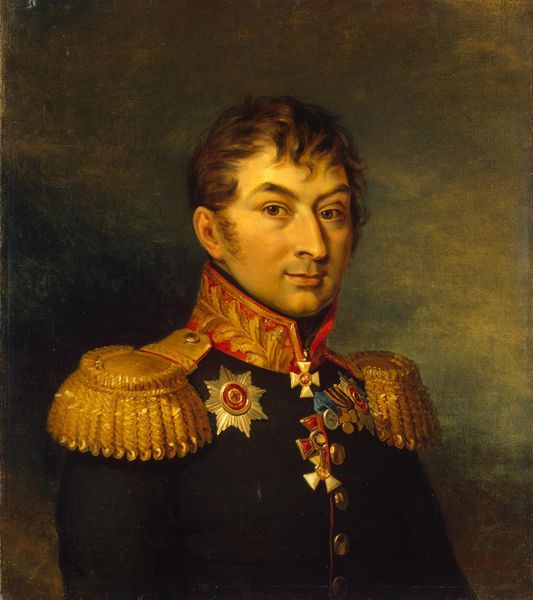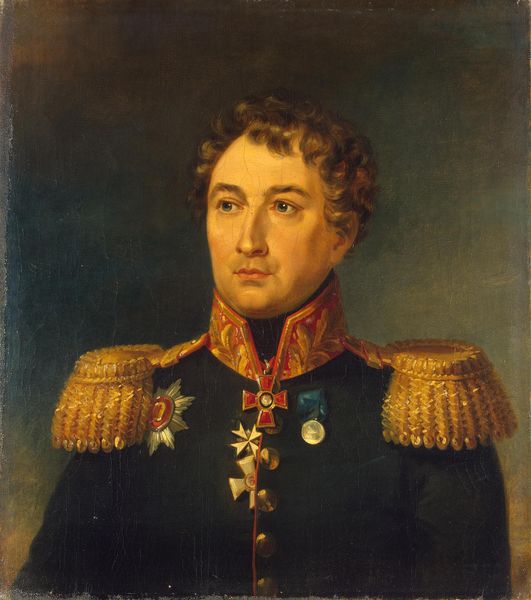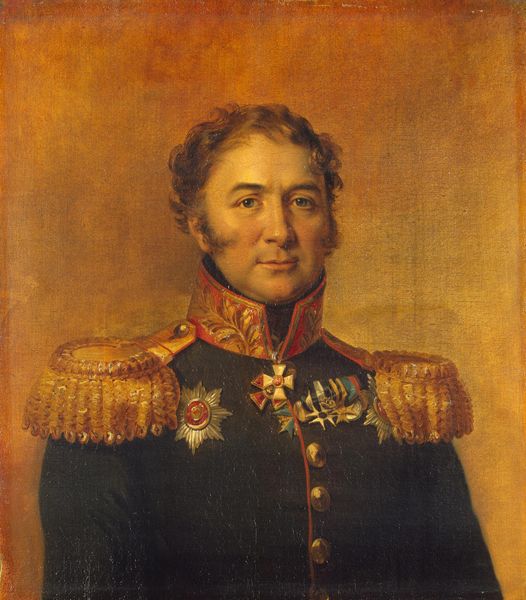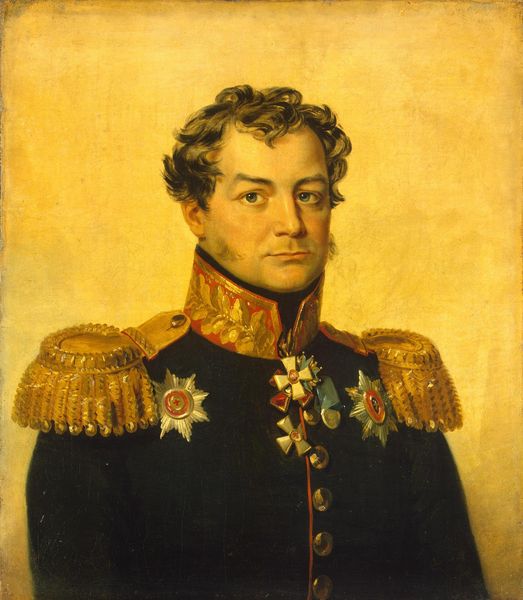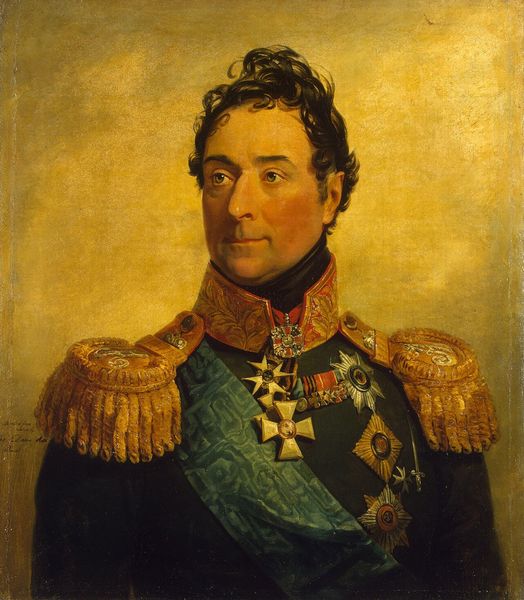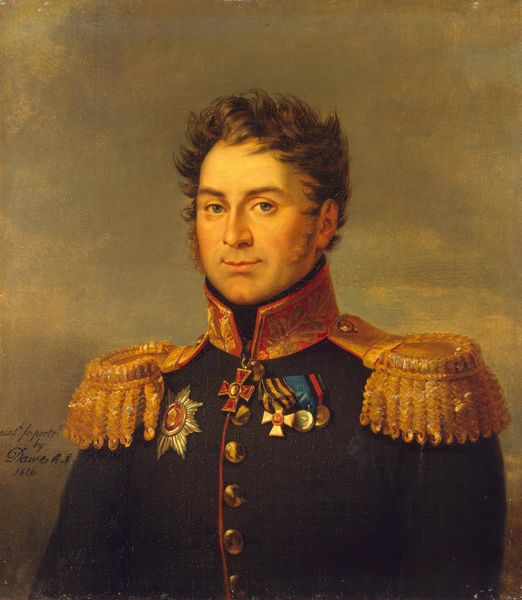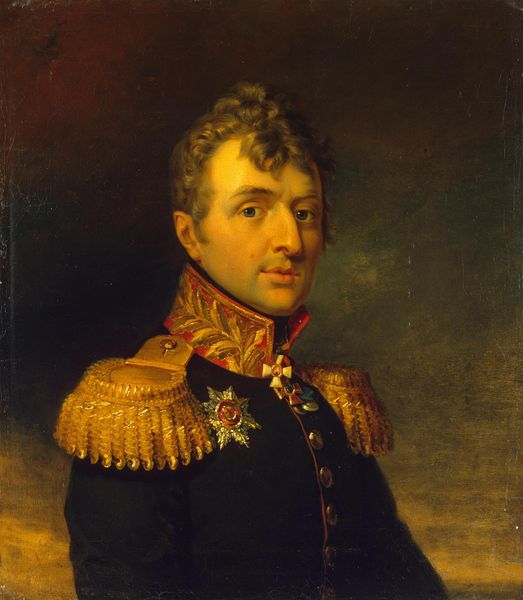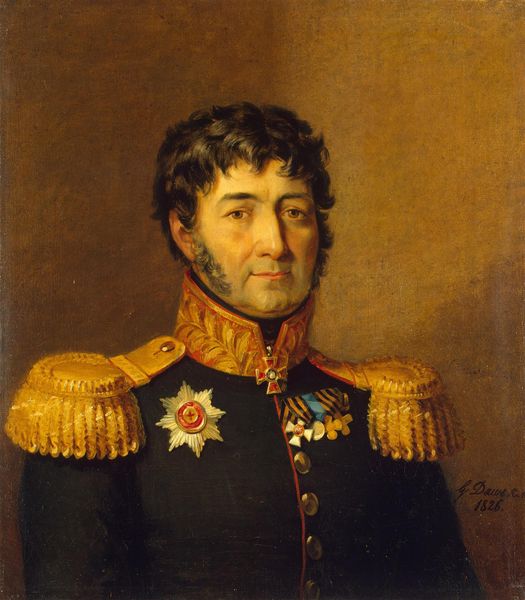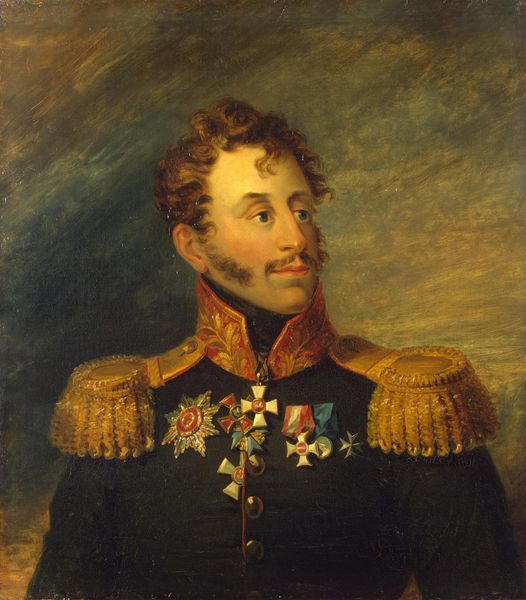
painting, oil-paint
#
painting
#
oil-paint
#
romanticism
#
russian-avant-garde
#
history-painting
#
academic-art
#
realism
Copyright: Public domain
Curator: Welcome. Here we have a portrait of "Pyotr Gavrilovich Lihachyov, Russian General" by George Dawe, currently residing here at the Hermitage Museum. Editor: He looks almost...soft. Not at all what I'd expect from a military man. His expression, despite all the finery, seems quite gentle. Curator: Dawe was commissioned to paint a great many portraits of Russian generals following the Napoleonic Wars. It was a concerted effort to construct a specific kind of visual narrative around Russian power and heroism. The proliferation of these images helped solidify a particular idea of Russian identity. Editor: It’s interesting to think about the visual propaganda at play. Those epaulettes and medals – they tell a story of achievement and valor. How much of that is constructed versus reality? What does that say about how Russia, or any nation, wants to be perceived, then and now? Curator: Exactly! We can look at who is being portrayed. Lihachyov clearly represents military power. But the image does other work too; the softer aspects humanize military leaders, perhaps making the regime appear less authoritarian and more relatable. Consider also the tradition of portraiture itself, how these images would circulate among the aristocracy reinforcing their status and values. Editor: The brushwork seems deliberate in conveying authority. Dawe employed techniques reflective of the Romantic period alongside realism in order to create this effective image. Yet there's that slight, almost wistful gaze in the general’s eyes, isn't there? Is that meant to convey humility, or perhaps it is a way for viewers to connect with him on an emotional level? I find myself looking at the portrait as an encapsulation of many intersections -- of duty, power, representation. Curator: Right. This portrait shows us the complex interplay of individual identity, official representation, and the projection of national ideology in 19th-century Russia. Editor: It certainly provides a window into that period, more than just a frozen moment but as a key that unlocks complex understanding of Russian society then. Curator: I hope examining it in this way encourages you to look at all portraits, and art generally, with fresh eyes. Editor: Yes, understanding art through different intersectional lenses helps to provide meaningful context.
Comments
No comments
Be the first to comment and join the conversation on the ultimate creative platform.
